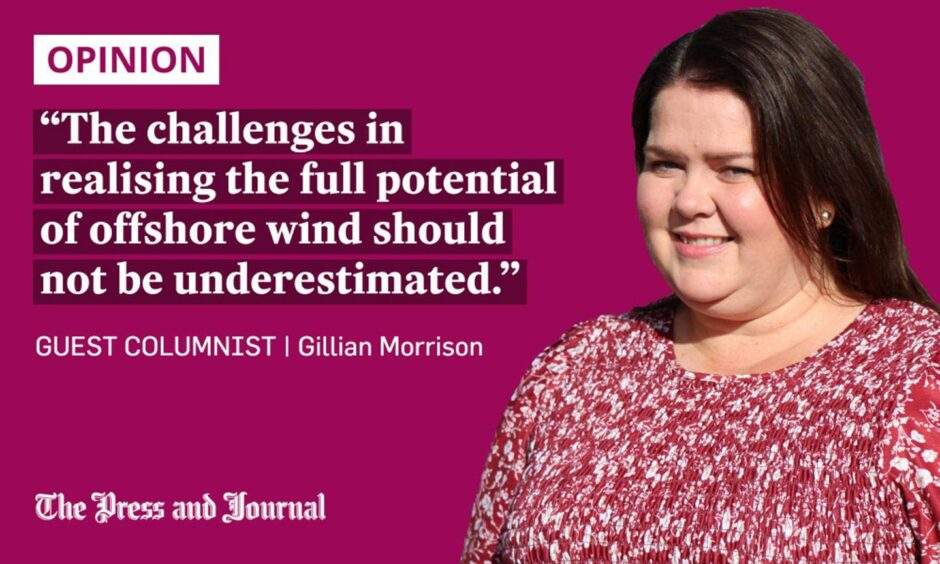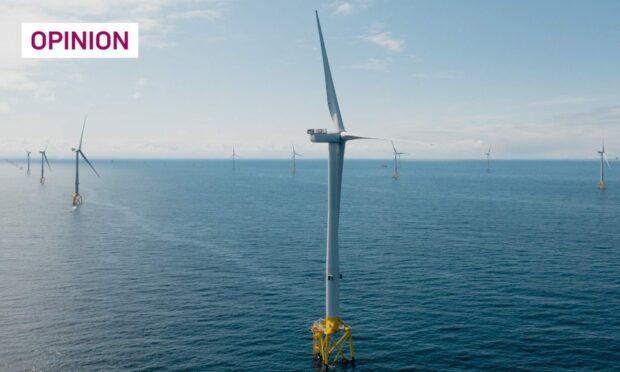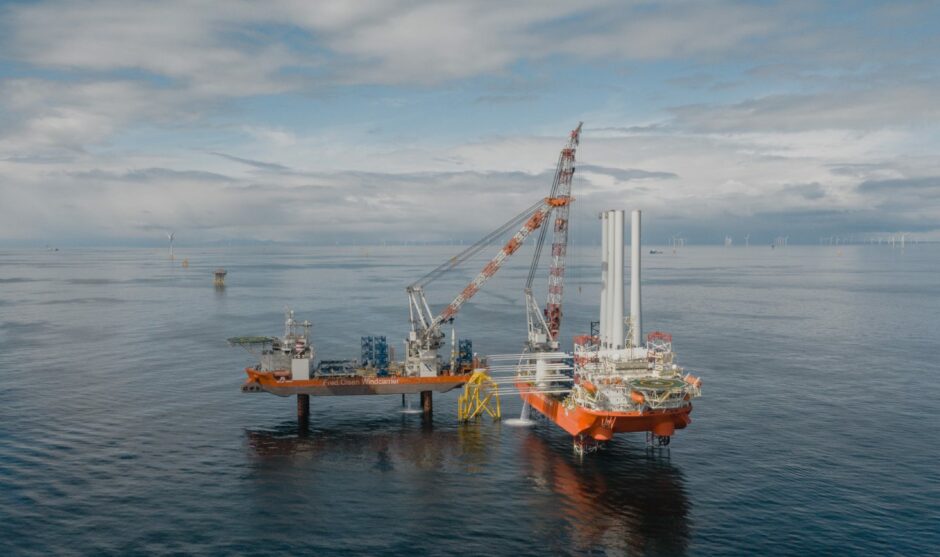Gillian Morrison is Crown Estate Scotland’s supply chain development manager.
Last month, Buckie welcomed Scotland’s energy minister Gillian Martin to an official ground-breaking ceremony to mark the beginning of construction of a new operations and maintenance base for the Moray West offshore wind project.
This development by energy company Ocean Winds is the latest example of how offshore wind is transforming Moray and the north of Scotland, bringing new jobs, attracting substantial investment, and placing the region at the forefront of the green energy revolution.
Sixty new jobs are set to be created by Ocean Winds in Buckie, complementing the company’s existing base in Fraserburgh.
The Macduff Shipyard, farther along the coast, will also benefit from Moray West as it will service supply boats for Ocean Winds.
It’s a reminder of the wide range of industries and skills needed to support the offshore wind sector, an area in which Scotland is an acknowledged global leader.

Efforts assist in climate change battle
Scotland’s installed offshore wind capacity is currently less than 3GW. This figure is projected to rise rapidly from around 2030 onwards as the first of the ScotWind projects begin operating.
Crown Estate Scotland’s ScotWind Leasing – the first commercial-scale round of offshore wind leasing in Scottish waters for a decade – resulted in proposed projects, many sited off the east coast, totalling as much as 27.6 gigawatts of new capacity being progressed.
That capacity is a substantial proportion of the approximate 100GW of offshore wind that the Climate Change Committee states is needed by 2050 to deliver net zero.
New approach to offshore windfarm leasing is leading the way
ScotWind was carefully designed for the unique conditions of Scotland, where challenges around grid connections, harsh environment and depth of seabed mean higher risks and costs for developers compared to developing off the coast of England, the United States and elsewhere.
Uniquely, ScotWind mandated Supply Chain Development Statements (SCDSs) from developers when applying for seabed agreements.
SCDSs are initial outline supply chain plans that provide critical early-stage information that can then be used to coordinate, support, and grow the supply chain in Scotland.
Initial signs are highly encouraging, with an initial average Scottish supply chain spend of £1.4bn per project.
Indeed, a recent report by fDi Intelligence found that Scotland attracted more greenfield foreign direct investment (FDI) into wind energy projects in 2022 than any other region in the world. Officials from governments around the world are now in touch with Crown Estate Scotland seeking to learn from ScotWind’s approach to supply chain.
Offshore windfarm leasing project already paying off
We are already seeing positive and tangible signs of this progressing with significant investments in component manufacturing and port infrastructure being proposed for Scotland.
Such huge investments bode well for the people of the north-east and indeed all of Scotland who can benefit yet further from offshore wind.
Substantial potential for Moray
The challenges in realising the full potential of offshore wind should not be underestimated. Supply chain bottlenecks, the skills base required, and access to grid connections all need to be addressed.
Challenges aside, investment in ScotWind projects’ development work is already well underway and we’d encourage local authorities such as Moray Council to continue to take a positive and proactive approach to attracting a slice of the pie.
The potential for Moray to benefit in the form of job creation and investment are substantial – it will require confidence and a team approach with all players from business groups, to individual companies to the council itself sending a strong message that Moray is open for business.


Conversation